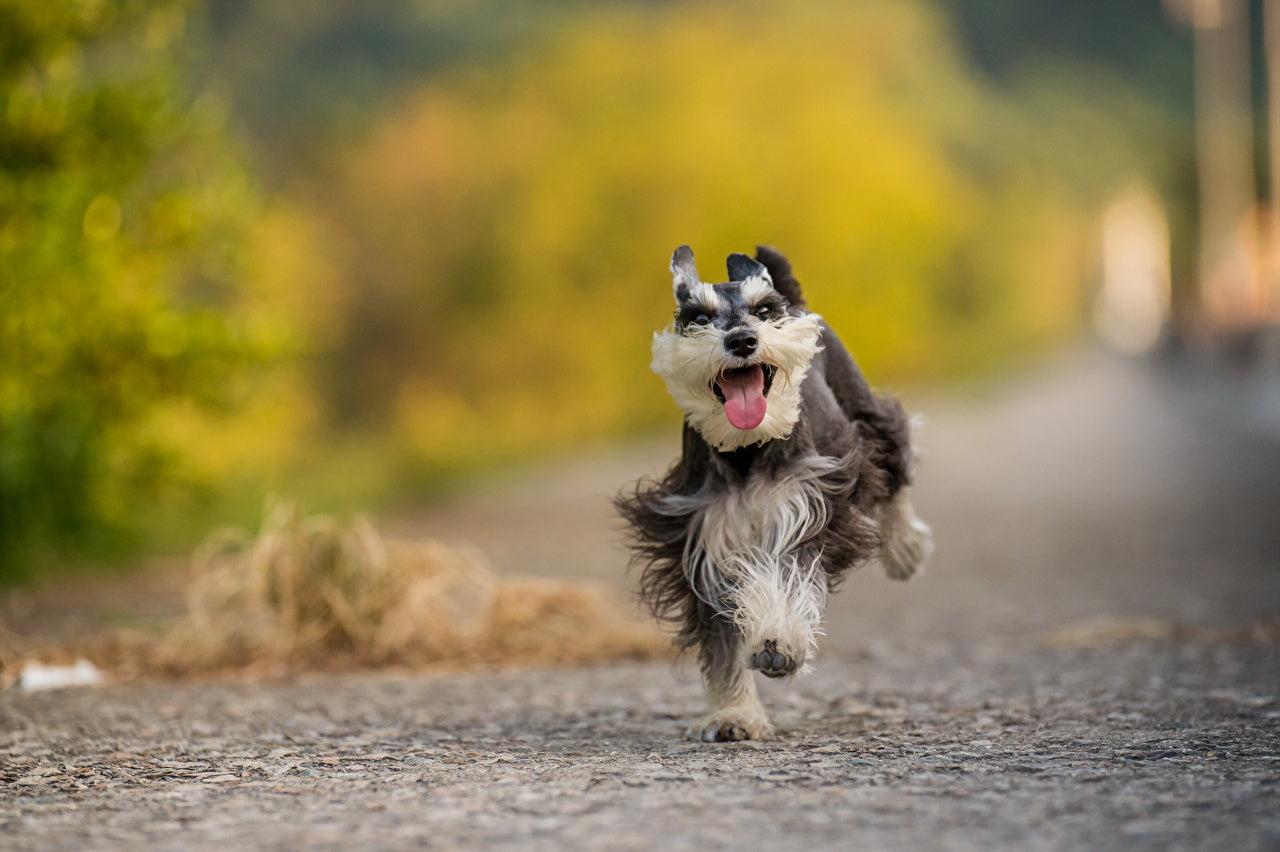Dog having trouble walking all of a sudden? It’s time to investigate. If your dog is walking like any of the below examples in this blog or just generally struggling to walk, then something is up and they may need to visit the vet…
Does Your Dog Walk Like This? If So, Something Is Wrong!

As a dog owner, you never want to know that your fluffy companion is experiencing any discomfort! So, if you’ve noticed a sudden change in the way that your dog is walking, there could be something serious going on that needs to be addressed.
There are lots of reasons your dog’s having trouble walking all of a sudden – some serious, and others that can be addressed at home through a simple change in lifestyle.
Here at PetLab Co., we have noticed different causes and reasons your pooch may be walking in a strange way. It’s extremely important to take your dog to the vet if they’re doing any of these strange walking behaviors…
Dog’s Hind Legs Weak

Weakness in the hind legs can cause your dog to become very uncomfortable and experience difficulty when walking – obviously. Depending on the severity of the issue, you may find your dog completely unable to use their back legs, causing a lot of difficulties doing day-to-day activities. This type of weakness is extremely common in older dogs, but can also affect younger dogs if there is a genetic trait.
Depending on the cause of this weakness, the behaviors may come on suddenly or develop slowly over time.
How To Help
If you’ve noticed any of these signs, it is best to get them to a vet as soon as possible. The sooner you’re able to get a diagnosis, the sooner you will be able to support your pooch in the right way. Your vet will then tell you what is best, depending on the age and severity of the condition. This may result in using braces on the weak hind legs so that your pet can move independently.
When the condition isn’t too developed, lots of owners use physio and stretches to keep their dog’s legs active. In doing so, it will also stimulate the blood flow around your dog’s body, helping to reduce other illnesses, too.
Abnormal Gait

If your dog is showing signs of an abnormal gait, it could be down to a multitude of reasons. Typical behaviors tend to be struggling to walk, having a slight dip in their hip as they take a step, or favoring a particular side when walking. Unfortunately, one of the main causes of an abnormal gait is stiffening joints, which normally affects older dogs.
How To Help
When your pooch experiences joint discomfort, it can really affect their movement and general happiness.
If you’ve noticed any of these signs, it is best to get them to a vet as soon as possible so they are supported in the right way. Your vet will then tell you what is best to do.
Dog Walking In Circles
Have you ever sat and watched your dog walk in a circle before they lie down? Or turn a couple of times before they empty their bowels? Well, this is actually very normal behavior! But, if they are circling regularly throughout the day, then you may be dealing with a poorly pup!
Circling could be a sign of an inner ear infection, injury, or even an obsessive-compulsive disorder (OCD). An inner ear infection is the most common reason for your dog to walk around in circles, normally accompanied by redness in the ear, head shaking and an odor from the ear itself. Check in with your vet for a diagnosis and appropriate treatment.
How To Help
Whether it is an infection or something a bit more serious, take your dog to the vet to get checked out. As said before, it could just be an ear infection, but it is better to be safe than sorry. Also, it is very easy to avoid infection in your pup’s ears. Make sure you have annual check-ups on their ears and eyes, as this will help prevent an infection in the future.
Holding A Leg Up & Skipping

When you take your pup for a walk, have you noticed them taking a skip with every step? This isn’t a quirk that your dog has just started to do… It could be due to Patellar Luxation. This is a condition that occurs when a dog’s kneecap is dislocated from the normal position in the dip of the thigh bone. This type of problem is incredibly common in smaller dog breeds, such as Chihuahuas and Pekingese, so if you have a smaller pooch, be mindful of this as a potential problem. Get your canine companion to the vet as soon as possible if you notice any of these behaviors as your dog may need their attention.
How To Help
Unfortunately, there isn’t anything that can be done to prevent this from happening, as it is a medical condition that could be in your dog’s genetics. However, there are things that you can do to support your dog if they’re suffering from this condition. Lower furniture in your home so that your dog doesn’t have to jump or reach for things. This should help keep them from overextending their knees. You may also need to avoid taking them for long walks, as this may become difficult and cause pain.
My Dog Is Pacing

Unlike leg weakness and abnormal gait, pacing is something that your dog will actively do, rather than something that is causing stress to their joints. Pacing can be an indication of a dog experiencing environmentally induced anxiousness, restlessness, or just happens to struggle to relax.
If you know your dog is prone to pace up and down when waiting for someone to come home, that is very normal! It is when your pooch is pacing daily…that it can become a problem.
How To Help
As one of the most common causes of pacing is environmentally induced stress, it would be a good idea to try to find ways of supporting your dog during times of discomfort. You could consider a dog-specific calming aid.
Make sure you source a calming aid from a reputable brand that make their supplements with ethically and naturally sourced ingredients. Chamomile is a good ingredient to look for when assessing product formulas.
Dog Walking On Hind Legs
If your dog is rearing up on their hind legs of their own accord, this is considered a sign of affection! Some dogs even do this together when they’re playing with one of their furry pals. If it’s a brief behavior, this is usually fine!
You should only be concerned if you see a dog walking on their hind legs for a reasonable period of time. Dogs are not meant to walk on their hind legs. If you see a dog walking on hind legs on a video online or on the street, this is usually because the dog has been trained (very often in an abusive way via fear and intimidation) to do so. It is not natural for a dog to walk in this way, and can cause long-term damage, so try not to encourage this abuse by sharing/forwarding those videos and never try to get your dog to do the same.
Dog Having Trouble Walking All Of A Sudden
When things are wrong, your dog can’t always tell you there is an issue. So, if your dog is having trouble walking all of a sudden, it’s definitely a cause for concern!
Although there are many reasons and causes for these changes, it is wise to get them checked out by a vet. As we covered earlier, the sooner you find the source of the problem, the quicker you can help support your much-loved pet. Once you know what is going on, you can get your dog back to living a normal life, as much as possible. Your dog’s health and wellbeing are very important, so making sure they’re comfortable and healthy is your key responsibility!
Sources
Author Smith, Alyssa “Back Leg Weakness In Dogs” Wag Walking, Oct 28. 2021 https://wagwalking.com/condition/back-leg-weakness
Author Maroon, Joseph Charles and Bost, Jeffrey W “Omega-3 fatty acids (fish oil) as an anti-inflammatory: an alternative to nonsteroidal anti-inflammatory drugs for discogenic pain” US National Library Of Medicine, Apr. 2006 https://www.ncbi.nlm.nih.gov/pubmed/16531187
Author Miller, Pat CBBC-KA CPDT-KA “Help For OCD Dogs” Whole Dog Journal, Jun 21. 2019 https://www.whole-dog-journal.com/behavior/help-for-ocd-dogs/
“Patellar Luxations” American College of Veterinary Surgeons https://www.acvs.org/small-animal/patellar-luxations
 B
B



